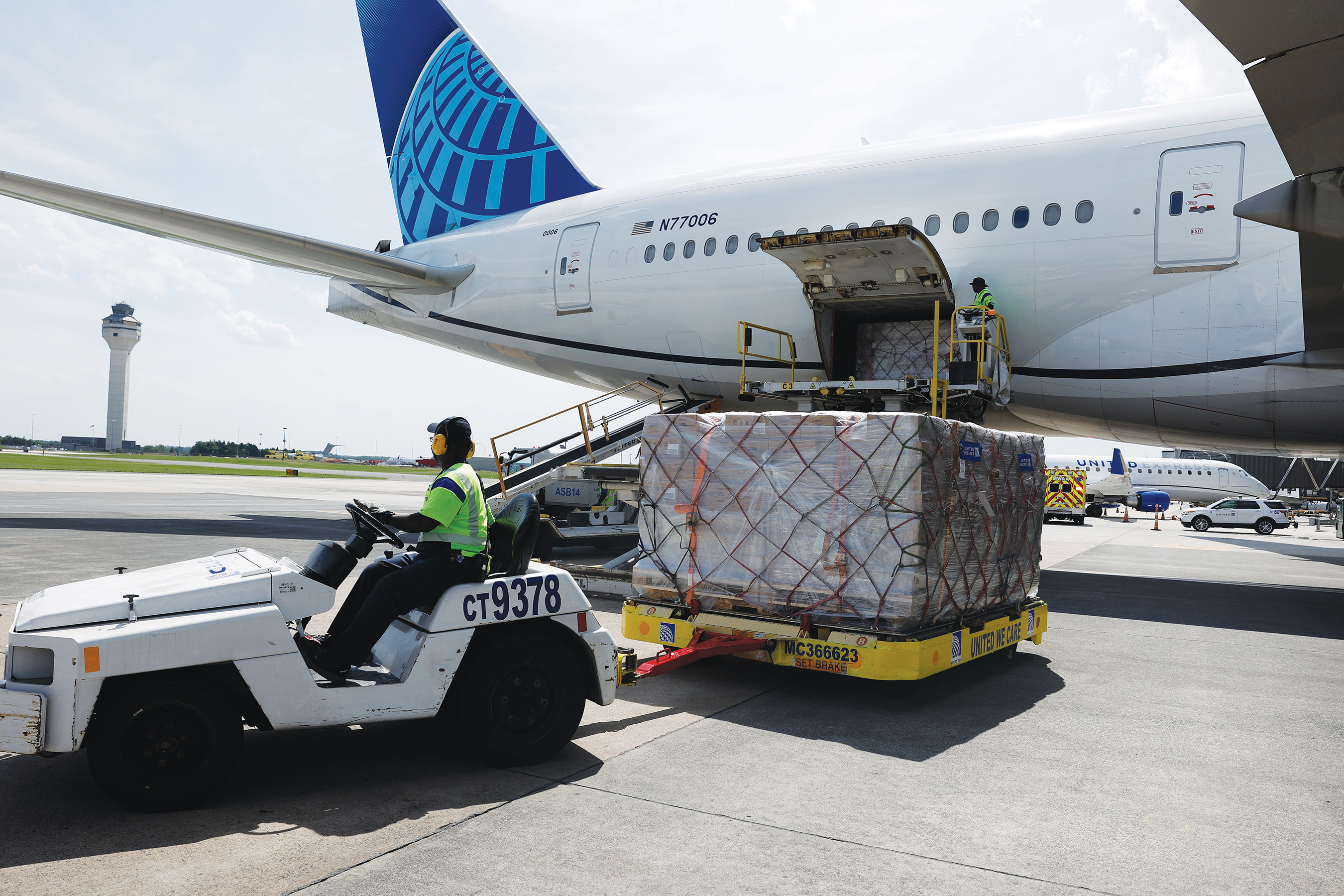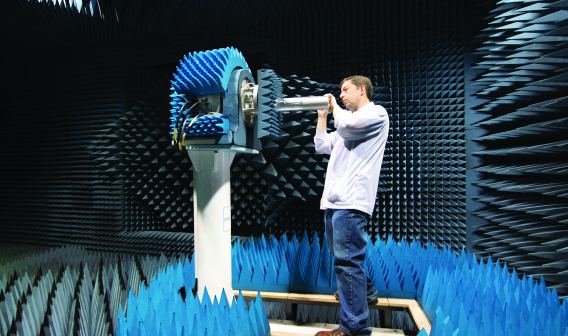Dulles Builds Cargo Reputation on Flexibility
Location, stellar service make Northern Virginia an ideal cargo hub for the East Coast and beyond
Ask a major importer or exporter what constitutes an optimal air cargo partner for their supply chain, and you’ll hear the usual desired qualities: location, transit time, Foreign Trade Zone incentives, carbon footprint, and even weather.
But dig deeper, listen closer, and carefully unpack the responses.
A clear theme pops out from the gathering word cloud, and it’s flexibility, ranging from first-class conveniences to adapting on the fly.
Washington Dulles International Airport checks that box — and all the others — in a big way.
Part of being a uniquely amenable supply chain asset comes naturally to Dulles, which straddles the border of Loudoun and Fairfax counties in Northern Virginia. Unfolding over 12,000 acres near the Potomac River and Maryland border that once were Civil War battlefields, it’s been able to spread its wings since opening in 1962.
But equally important is how the airport — and the Metropolitan Washington Airports Authority (MWAA), under which it operates — responds to both challenges and opportunities, such as 2020’s manifold obstacles.
“During the pandemic, they [Dulles] were very agile and flexible,” said Marc Barlund, branch manager at Kuehne+Nagel, a Switzerland-based global transport and logistics company that stakes a claim as the No. 1 air and sea freight forwarder.
And, of course, there’s the prime location, which doesn’t necessarily mean the long, impressive list of what lies within close proximity to Dulles, but also who. The Transportation Security Administration (TSA), for example, routinely runs demos at Kuehne+Nagel’s Dulles facilities.
“It’s one of the ways in which we’re able to stay on really good terms and helps us know what trends are coming,” said Barlund, who oversees air logistics in his role. “We’ve found it gives us a leg up.”
Dulles’ ascent from serving 55,000 annual passengers in the early 1960s to guiding 9.3 million through its gates in 2023 was a record number that made it the fastest-growing international gateway airport. This tracks with its growing haul of cargo: more than 300,000 tons annually connecting to 140-plus destinations via 41 airlines.
That’s an abundance of pallets and packages of pharmaceuticals, semiconductors, medical devices, aerospace engineering components, automotive parts, and consumer-facing goods. Some of it is perishable, some temperature-sensitive, and some just sensitive to any jolt, jiggle, or drop, making smooth, timely navigation of the airport’s shipping and handling gauntlet just the start when it comes to supply chain success.
A Supply Chain Sweet Spot
Coordinating supply chain logistics is akin to putting together a 10,000-piece jigsaw puzzle of shape-shifting pieces. They’re vulnerable to variables ranging from planned construction to unplanned detours, as well as pandemics and international affairs affecting everything from fuel prices to tariffs.
It’s part science, part art, a little luck, and a whole lot of adapting to real-time challenges and opportunities.
And Dulles has aced all the questions on the resiliency final exam, thanks in large part to a prime location that’s even stood up to perceived minor threats.
Take traffic, which by perception is a veritable restrictor plate on Northern Virginia commute times. But the reality for Dulles is far from the reputation.
“Traffic patterns are not a problem in and out of the airport like they are in Northern Virginia,” Barlund said. This is huge for getting a head start on a shipment’s next stop, since 56% of the U.S. population lives within a day’s drive of Dulles.
Because of the airport’s proximity to major thoroughfares — including the Capital Beltway (Interstates 95 and 495), as well as I-270, Route 66, and Route 15 — it’s not just the expected destinations that make sense for those moving cargo through Dulles.
Yes, Norfolk and its key port facilities are only 210 miles south and east of Dulles, with Baltimore (60 miles) and Richmond (120 miles) also relatively quick trips. It’s not a stretch, however, to suggest that Dulles’ effective footprint extends hundreds of miles from the Washington metro area in every direction.
Impressive Reach
“We bring cargo to Dulles for surrounding areas, but also for Connecticut, New York, Ohio, Pennsylvania, and the Carolinas,” said Kuehne+Nagel Vice President, Air Logistics Northeast Mario Roldan.
Importers have used Dulles to regularly serve markets as far as Kentucky and even Michigan simply because it’s a better, faster, more reliable solution than the alternatives, Roldan said.
Kuehne+Nagel identified the prime opportunity Dulles provided early on, investing in and building a robust gateway to stage consolidation of goods for efficient outbound transport.
Other major logistics and freight forwarding companies have taken a similar approach, choosing to build a dedicated facility on the Dulles property.
A representative from one such company said, “Dulles is a really good solution for our customers. Geographically, it’s just an ideal location…you can get up to [key customer locations] quickly.”
The representative said this was especially true for biotech, pharmaceutical, and medical device companies, adding that the airport has a lot of capacity for freight, yet it is right-sized and has proven reliable in handling delicate product quickly.
It’s not just miles and minutes that make Dulles an ideal supply chain partner. It also has to do with having a favorable environment for the product to travel through once it’s loaded into a rail car or 18-wheeler.
“Virginia is an attractive state in general because it doesn’t have the extremes,” said Barlund, mentioning weather as one steadying force. “It’s a safe place with very few disruptions.”

Washington Dulles International Airport
Flexing and Growing
Over six decades, Dulles has evolved from a small operation on the outskirts of the Beltway to play a key role in supply chains for businesses ranging from Fortune 500 stalwarts to startups on the brink of the nextbig biotech innovation.
Tabbed as Foreign Trade Zone 137 for nearly 40 years, Dulles extends financial incentives including tariff reductions to qualifying businesses located within 60 miles. In addition to laying the groundwork for more cost-effective trade, Dulles offers air cargo capabilities and amenities ranging from bonded warehousing to refrigerated and ambient-temperature-controlled storage space. The 24-hour facility can handle aircraft of any size, and has room to grow.
One vertical taking advantage of being in Dulles’ orbit is data centers. Loudoun County boasts the globe’s largest concentration of the facilities with more than 25 million square feet — an area nicknamed “Data Center Alley.”
“And that continues to grow,” said Julian Amato, director of business development at Kuehne+Nagel. “Our customers like the fact that there’s a lot of reliability around bringing anything through Dulles…If you ask most diagnostic device or drug companies, they agree that they like Dulles.”
Stakeholders see an opportunity for Dulles to consolidate its market share on tech-sector cargo, with major companies already using the gateway to supply Northern Virginia data centers.
Another way that Dulles drives both growth and flexibility for its cargo customers is the groundswell of support it receives from a wide range of organizations.
“It opens the doors to additional solutions that we or our customers are looking for,” Amato said. “I’ve never seen a chamber of commerce and specific associations, from a supply chain perspective, be so focused on the stakeholders. Having the local connection…we don’t see that in other markets.”
And when it comes to being flexible, it’s not just about reacting to the challenges of today, but planning for the opportunities of tomorrow.
This includes an MWAA collaboration with Dominion Energy to create a 100MW solar project, which is highlighted by a battery energy storage system. Slated for completion in 2026, the project would give Dulles more solar capacity than any other U.S. airport.
“We have an airport authority that’s really willing to invest,” Amato said.
In other words, the future is bright for all those leveraging Dulles in their supply chain — and there’s plenty of open runway ahead.




